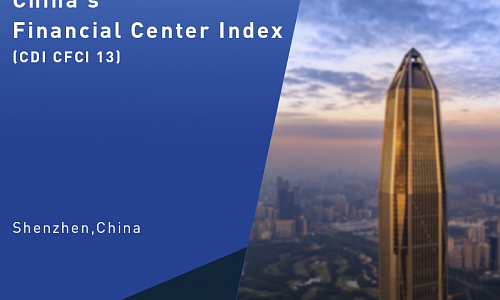China should invest in assets other than Treasuries: central bank adviser
BOAO, China (Reuters) - China should make better use of the country’s funds by looking to invest its large capital reserves in real assets, not United States Treasury bonds, an adviser to China’s central bank said on Monday.
“We are a low income country, but we are a high wealth country...we should make better use of the capital. Rather than investing in U.S. government debt, it’s better to invest in some real assets,” Fan Gang, director of the National Economic Research Institute and a member of the People’s Bank of China’s (PBOC) Monetary Policy Committee, said.
Fan, speaking at the Boao Forum for Asia in southern Hainan province, also said that China’s debt load was a serious problem but that it would not lead to a financial crisis for the country as the debt was mostly domestic and China had ample savings.
He said that the debt overhang was a result of previous overheating of the economy.
“This problem is serious and we need to clean house. We need to contain this financial risk, but it will not cause a financial crisis,” he said.
China’s rising debt burden has raised concerns that it could eventually trigger a financial crisis, with government officials acknowledging the challenge but vowing to contain the risks.
Fan said China’s savings rate is 44 percent of GDP, giving it enough of a cushion to deal with the risks, though he added that it would take time for China to stabilize the leverage ratio.
In an interview with Chinese financial magazine Yicai on Sunday, Fan addressed China’s rising trade tensions with the United States, saying the U.S. feels pressure from China’s rise.
Fan said the United States will take measures, which could include a trade war or blocking Chinese investment in the country, to contain China’s rapid development.
On Sunday, a government researcher told the Boao forum that China was unlikely to sell off its holdings of U.S. Treasury bonds on a large scale as a tactic in its trade dispute with the United States.
“On whether China will reduce its foreign exchange reserves, how policymakers think, I don’t know. I personally believe this possibility is very small,” Zhang said.
China held around $1.17 trillion of Treasuries as of the end of January, making it the largest of America’s foreign creditors and the No. 2 overall owner of U.S. government bonds after the Federal Reserve.
A Chinese vice finance minister said last week that China is a responsible investor of its foreign exchange reserves and that it follows market rules in investing its reserves.
China’s foreign exchange reserves, the world’s largest, rose slightly in March to $3.143 trillion, central bank data showed on Sunday.
China should invest in assets other than Treasuries: central bank adviser
BOAO, China (Reuters) - China should make better use of the country’s funds by looking to invest its large capital reserves in real assets, not United States Treasury bonds, an adviser to China’s central bank said on Monday.
“We are a low income country, but we are a high wealth country...we should make better use of the capital. Rather than investing in U.S. government debt, it’s better to invest in some real assets,” Fan Gang, director of the National Economic Research Institute and a member of the People’s Bank of China’s (PBOC) Monetary Policy Committee, said.
Fan, speaking at the Boao Forum for Asia in southern Hainan province, also said that China’s debt load was a serious problem but that it would not lead to a financial crisis for the country as the debt was mostly domestic and China had ample savings.
He said that the debt overhang was a result of previous overheating of the economy.
“This problem is serious and we need to clean house. We need to contain this financial risk, but it will not cause a financial crisis,” he said.
China’s rising debt burden has raised concerns that it could eventually trigger a financial crisis, with government officials acknowledging the challenge but vowing to contain the risks.
Fan said China’s savings rate is 44 percent of GDP, giving it enough of a cushion to deal with the risks, though he added that it would take time for China to stabilize the leverage ratio.
In an interview with Chinese financial magazine Yicai on Sunday, Fan addressed China’s rising trade tensions with the United States, saying the U.S. feels pressure from China’s rise.
Fan said the United States will take measures, which could include a trade war or blocking Chinese investment in the country, to contain China’s rapid development.
On Sunday, a government researcher told the Boao forum that China was unlikely to sell off its holdings of U.S. Treasury bonds on a large scale as a tactic in its trade dispute with the United States.
“On whether China will reduce its foreign exchange reserves, how policymakers think, I don’t know. I personally believe this possibility is very small,” Zhang said.
China held around $1.17 trillion of Treasuries as of the end of January, making it the largest of America’s foreign creditors and the No. 2 overall owner of U.S. government bonds after the Federal Reserve.
A Chinese vice finance minister said last week that China is a responsible investor of its foreign exchange reserves and that it follows market rules in investing its reserves.
China’s foreign exchange reserves, the world’s largest, rose slightly in March to $3.143 trillion, central bank data showed on Sunday.
China should look beyond US Treasuries for ‘real assets’, central bank adviser says
China should make better use of the country’s funds by looking to invest its large capital reserves in real assets, not United States Treasury bonds, an adviser to China’s central bank said on Monday.
“We are a low-income country, but we are a high-wealth country ... We should make better use of the capital. Rather than investing in US government debt, it’s better to invest in some real assets,” Fan Gang, director of the National Economic Research Institute and a member of the People’s Bank of China’s Monetary Policy Committee, said.
Fan, speaking at the Boao Forum for Asia in southern Chinese province of Hainan, also said China’s debt load was a serious problem but that it would not lead to a financial crisis for the country because the debt was mostly domestic and China had ample savings.
He said the debt overhang was a result of previous overheating of the economy.
“This problem is serious and we need to clean house. We need to contain this financial risk, but it will not cause a financial crisis,” he said.
China’s rising debt burden has raised concerns that it could eventually trigger a financial crisis, with government officials acknowledging the challenge but vowing to contain the risks.
Fan said China’s savings rate was 44 per cent of GDP, giving it enough of a cushion to deal with the risks, though he added that it would take time for China to stabilise the leverage ratio.
In an interview with Chinese financial magazine Yicai on Sunday, Fan addressed China’s rising trade tensions with the United States, saying the US feels pressure from China’s rise.
Fan said the United States would take measures, which could include a trade war or blocking Chinese investment in the country, to contain China’s rapid development.
On Sunday, a government researcher told the Boao Forum that China was unlikely to sell off its holdings of US Treasury bonds on a large scale as a tactic in its trade dispute with the US.
“On whether China will reduce its foreign exchange reserves, how policymakers think, I don’t know. I personally believe this possibility is very small,” Zhang said.
China held around US$1.17 trillion of Treasuries as of the end of January, making it the largest of America’s foreign creditors and the No 2 overall owner of US government bonds after the US Federal Reserve.
A Chinese vice finance minister said last week that China was a responsible investor of its foreign exchange reserves and that it followed market rules in investing its reserves.
China’s foreign exchange reserves, the world’s largest, rose slightly in March to US$3.143 trillion, central bank data showed on Sunday.
This article appeared in the South China Morning Post print edition as: Forgo US bonds for real assets, bank adviser says.
Trade issues won't hurt reform push
China capable of handling challenges including possible market fluctuations
Sino-U.S. trade conflicts will never constrain China's efforts to push forward economic structural reforms, economists said on Monday at the Boao Forum for Asia in Hainan province.
Last week's tit-for-tat moves between China and the U.S. are a reflection of fundamentally unbalanced economic development, and China should focus on its long-term interests, sustainable growth, restructuring and further opening up, Fan Gang, director of the National Economic Research Institute, told China Daily in an exclusive interview during the forum.
With the opening-up experience in the past decades, China is in a stronger position to deal with risks including possible market fluctuations caused by trade conflicts, "and that means we can open further", said Fan.
President Xi Jinping will provide a new policy blueprint on Tuesday at Boao, when participants gathering in the coastal city are expecting to hear of more opening-up and reform measures that the country will take.
China's economy has hit the bottom of the so-called L-shape growth trend, according to Fan, although an immediate rebound is less likely. "We are in a process of bumping at the bottom, a normal process of the economic cycle, which can be seen as an opportunity to fix China's own problems, such as overcapacity and financial risks, then we can have a better growth in the next stage", he said.
The country's potential economic growth rate could be between 5 to 6 percent in the coming years, mainly driven by domestic consumption rather than depending on exports or investment, former central bank governor Dai Xianglong said at the forum on Monday.
Closing more indebted manufacturers with overcapacity is inevitable during the economic restructuring and quality-upgrading process, pushing debt risk management, especially for non-financial enterprises, to be one of the policymakers' priorities, said Dai.
He suggested launching specific laws on debt restructuring as soon as possible. "I have confidence on taking market-oriented measures to tackle debt risks."
The former central bank governor stressed the debt-to-equity swap program and more capital injection from the government.
Given the less-developed financial sector compared with the globally advanced level, Dai called for the strengthening of Chinese securities companies, a way to enhance direct financing and facilitate deleveraging. He also suggested to continue encouraging institutional investors and optimizing a multi-level capital market structure.
Zhang Yuyan, director of the Institute of World Economics and Politics at the Chinese Academy of Social Sciences, said at the forum that China proceeds with opening up measures at its own pace, which will benefit the regional economy in Asia, especially neighboring countries, although other potential risks may emerge in Asia, including the tightening of major economies' monetary policy.
Economists say Asia will ride B&R to robust growth in future
Despite a shaky global recovery and rising trade protectionism, the Asian economy will maintain robust growth in the upcoming years, as countries in the region deepen economic cooperation and benefit from the Belt and Road Initiative, renowned economists and officials recently said at the Boao Forum for Asia annual conference.
Dai Xianglong, China’s former central bank governor, said Asia will remain the world’s fastest-growing region in the coming 20 years, or even by the middle of this century.
“An important driver will be China, whose intensified push to further open itself to the world will generate more opportunities for other Asian economies,” Dai said.
According to him, China’s GDP is expected to expand at around 6 per cent in the next decade. Though such a rate is slower than previous figures, the growth will be of higher quality and more consumption-driven.
The rising purchasing power of Chinese consumers will help boost China’s trade links with other Asian countries, Dai said, adding that India is also expected to post faster growth, which will also spur the overall development of the region.
Moreover, China’s Belt and Road Initiative will help build sprawling infrastructure connections among Asian countries, which will lay a sound base for closer economic ties, said Yasuyuki Sawada, chief economist of the Asian Development Bank.
Promoting free trade is one of the keys to maintaining the strong momentum of the Asian economy. To achieve that, it is of great importance to build broader infrastructure connections in transportation, energy and information communication technology. That’s exactly what the Belt and Road Initiative has been calling for, Sawada added.
His view was echoed by Qian Keming, China’s vice-minister of commerce. “The Belt and Road Initiative will play a big role in boosting Asian economic integration. On top of closer infrastructure links, it will also promote more dialogue in policy, trade and institutional mechanisms,” Qian said.
According to him, amid rising trade protectionism, the initiative’s call for openness, inclusiveness, and the common destiny of a shared future will help advance multilateral trade and drive the overall development of Asia.
“The past years have already seen significant progress in Asian economic integration. Currently, trade among ASEAN countries accounts for 30 per cent of ASEAN’s overall trade volume. The figure in European countries is 70 per cent. This highlights huge potential for further development in Asia,” Qian added.
The remarks came as a report forecast that Asia is expected to lead the world in economic development in the future. According to the Asian Competitiveness Annual Report 2018, which was released at the BFA conference, the continent will benefit from improved external growth, restructured internal drivers, and deepened Asia economic integration.
Despite a shaky global recovery and rising trade protectionism, the Asian economy will maintain robust growth in the upcoming years, as countries in the region deepen economic cooperation and benefit from the Belt and Road Initiative, renowned economists and officials recently said at the Boao Forum for Asia annual conference.
Dai Xianglong, China’s former central bank governor, said Asia will remain the world’s fastest-growing region in the coming 20 years, or even by the middle of this century.
ADVERTISEMENT
“An important driver will be China, whose intensified push to further open itself to the world will generate more opportunities for other Asian economies,” Dai said.
According to him, China’s GDP is expected to expand at around 6 per cent in the next decade. Though such a rate is slower than previous figures, the growth will be of higher quality and more consumption-driven.
The rising purchasing power of Chinese consumers will help boost China’s trade links with other Asian countries, Dai said, adding that India is also expected to post faster growth, which will also spur the overall development of the region.
Moreover, China’s Belt and Road Initiative will help build sprawling infrastructure connections among Asian countries, which will lay a sound base for closer economic ties, said Yasuyuki Sawada, chief economist of the Asian Development Bank.
Promoting free trade is one of the keys to maintaining the strong momentum of the Asian economy. To achieve that, it is of great importance to build broader infrastructure connections in transportation, energy and information communication technology. That’s exactly what the Belt and Road Initiative has been calling for, Sawada added.
His view was echoed by Qian Keming, China’s vice-minister of commerce. “The Belt and Road Initiative will play a big role in boosting Asian economic integration. On top of closer infrastructure links, it will also promote more dialogue in policy, trade and institutional mechanisms,” Qian said.
According to him, amid rising trade protectionism, the initiative’s call for openness, inclusiveness, and the common destiny of a shared future will help advance multilateral trade and drive the overall development of Asia.
“The past years have already seen significant progress in Asian economic integration. Currently, trade among ASEAN countries accounts for 30 per cent of ASEAN’s overall trade volume. The figure in European countries is 70 per cent. This highlights huge potential for further development in Asia,” Qian added.
The remarks came as a report forecast that Asia is expected to lead the world in economic development in the future. According to the Asian Competitiveness Annual Report 2018, which was released at the BFA conference, the continent will benefit from improved external growth, restructured internal drivers, and deepened Asia economic integration.
ADVERTISEMENT
Such optimism was also evident in a report released by the Centre for Economics and Business Research in London. The research institute forecast that three of the world’s four largest economies will be Asian-China, India and Japan-by 2032, with China expected to overtake the United States to top the global list by that time.
But to turn these long-term projections into reality, strong efforts are needed to tackle short-term risks including the US administration’s trade protectionism which is marked by higher tariffs, analysts said.
Also, how to properly resolve the debt issue will be a challenge. “But there is no need to exaggerate the problem. China’s government debt is relatively low, and the country has ample domestic savings,” said Fan Gang, director of the National Economic Research Institute and a member of the monetary policy committee of the People’s Bank of China.
Another important impetus to growth will be Asian countries’ willingness to embrace technology and cultivate innovation, as part of their broader push to advance economic restructuring, said Zhou Wenzhong, former secretary general of the 2018 Boao Forum for Asia.
“Innovation is the primary driving force to get emerging Asian economies on the fast track and help them achieve significant growth,” Zhou said.
A good example is China’s quick adoption of new technologies, which has effectively bolstered the country’s growth in recent years, he added.
Sanjaya Baru, secretary general of the Federation of Indian Chambers of Commerce and Industry, said China’s transition to consumption-driven growth and greater market access to the country will also create opportunities for other economies in Asia and boost the region’s overall development.
Though no specific data is immediately available to show exactly how big the opportunities are that China’s consumer market can offer for foreign countries, a clue can be gained through observation of the cross-border e-commerce sector.
Market research firm eMarketer estimates that by 2020, half of China’s digital shoppers-about one-quarter of the country’s population of 1.4 billion-will be buying foreign products online and total sales will top $157 billion.
“China’s growing role as an importer and investor is something that most developing countries will welcome,” Baru said.
Local housing markets heat up as side effect of talent policies in Chinese cities
Chinese cities, including first-tier cities and smaller ones, are fiercely competing to attract skilled Chinese people by enticing them with hukou, or permanent residence.
On April 9, the Beijing municipal government launched a point-based hukou application system for non-Beijingers who hope to become permanent urban residents of the city.
Under the new policy, non-natives of the city below the legal retirement age who have held a Beijing temporary residence permit within the city's social insurance records for seven consecutive years and don't have a criminal record are now eligible to accumulate points for their hukou application.
However, the government hasn't yet specified exactly how many points applicants need to accumulate to meet the basic application requirements.
What is known is that certain elite members of China's workforce, such as those who have invested or worked in startups or science labs, are likely to reach higher scores in the point-based competition.
Different thresholds
Kathleen Lü, a native of East China's Jiangsu Province who works in a foreign manufacturing company in Beijing, said that she currently doesn't meet the requirement of the seven-year social insurance record, but that the new policy has given her at least "some hope" for settling down in the city.
According to Lü, before the new policy was launched, some employees of companies, mostly State-owned ones, were already qualified for a hukou, but reaching that quota is often unattainable for employees in foreign enterprises like hers.
"Also, as the exact threshold [for a hukou] has not yet been specified, I fear the policy is still not transparent enough," she said.
The Shanghai municipal government also launched a guideline on March 26 which noted that skilled workers from 13 scientific areas including photonics and aerospace can directly get a hukou in Shanghai.
Prior to the guideline, Shanghai had already offered a number of preferential conditions for such hukou applications. For example, government-identified senior management officials and entrepreneurs could already directly apply for a Shanghai hukou.
Several non-Shanghainese, who are currently working in Shanghai, told the Global Times on Wednesday that getting a hukou in the city is still demanding, not only because of the detailed and harsh requirements, but also because of the long approval process which often takes several months.
Compared with first-tier cities, the bonuses of getting a hukou are much stronger in smaller cities. For example, the local government of Xi'an in Northwest China's Shaanxi Province announced on March 22 that local university residents can get a direct hukou after they graduate.
Some cities, like Shijiazhuang, capital of North China's Hebei Province, and Ji'nan, capital of East China's Shandong Province, have also offered house-purchasing subsidies for top talent who want local residence, according to media reports.
Housing market heat
One "side effect" of the move to attract more talent with hukou is the spike in local housing markets, particularly in some second-tier cities.
In Xi'an, for example, the real estate market has been heating up in recent months as non-locals crowd in.
The local government disclosed in a Weibo post on Wednesday that in the first three months of 2018, nearly 210,000 people were issued with a hukou in the city, compared with 250,000 new hukou issued in the city in the whole of 2017.
Zhu Yang, a real estate consultant based in Xi'an, said that in recent months, the rise in the number of non-locals has indeed stimulated a rise in average housing prices.
"The local government is of course also watching out for fluctuations in house prices with measures launched to restrict house-purchasing, so the market has not been too out of shape," she told the Global Times.
For example, Yuemeiguoji, a property project in Xi'an, saw house prices surge from about 9,500 yuan ($1,515) per square meter in February to 10,500 yuan in March, data from domestic housing information website fang.com showed.
Data released by the National Bureau of Statistics on Wednesday showed that the prices of new homes in Xi'an rose by 0.9 percent on a monthly basis in March. Overall, 55 out of 70 major Chinese cities saw their housing prices rise on a monthly basis that same month.
Xue Jianxiong, president of Shanghai-based asset management firm UTC, said that strong policy stimulus can bring about a rise in the rigid demands of purchases of homes in second-tier cities. By comparison, in first-tier cities such as Beijing, the threshold for hukou attainment is still very high.
"In first-tier cities, hukou policies are tilting toward a small group of elite members, so they should drive up the sales of qualified and medium-level real estate projects, but on the whole, the impact of those policies on the overall housing market is [currently] unperceivable," Xue told the Global Times.
He also noted that for certain second-tier cities where housing prices have been slumping because of government regulation, such as in Nanjing, capital of East China's Jiangsu Province, the hukou policies there can be a balancing force.
Yan Yuejin, a research director at the Shanghai-based E-house China R&D Institute, said that the effects of those policies will likely initially manifest in the renting market, he told the Global Times on Wednesday.
Song Ding, a research fellow at the China Development Institute, noted that China's housing price regulation will be a long-term mechanism and won't be swayed by the talent attraction policies.
Economic bonuses
Zhang Ning, a research fellow at the National Academy of Economic Strategy under the Chinese Academy of Social Sciences, noted that local governments' talent policies will exert multi-faceted positive effects on local economies.
For example, with China's increasing aging population, local governments need methods to cope with rising pension expenditure pressure, and the increasing young labor force, as most local hukou policies target younger generations, can be a good solution.
"Furthermore, such policies can boost local GDP and increase tax incomes for second-tier cities. For bigger cities that don't have such a big tax burden, they are pursuing talent to achieve industrial upgrades," Zhang told the Global Times on Tuesday.
Song also said that it is not enough to incentivize talented individuals with hukou. "Employment and industries must catch up with talent policies, otherwise skilled workers won't stay for a long time," he noted.
According to Zhang, hukou policies should be a short-term solution, while in the longer term, local governments should work toward a fairer business environment and better support for administrative services.
Economist's '6-wallet' theory triggers housing debate
Fan Gang, a member of the monetary policy committee of the People's Bank of China, was at the center of public attention due to his "six-wallet" theory for homeownership.
In an episode of "China Economic Forum" aired on April 19 by China Central Television, Fan used wallets as a metaphor for funding sources when buying an apartment. He said if a young couple has six "wallets," representing the financial support from the couple's two pairs of parents and four pairs of grandparents, and the funds from the "wallets" can afford the down payment on an apartment, the young couple should use that money to buy an apartment.
He also stressed that whether or not to use the money to buy an apartment depends on many specific factors. For instance, he said, if a young person doesn't have a stable job, renting an apartment is more cost-efficient than buying one.
However, for those who have marriage plans, and whose family members have enough money to help them, Fan believed pooling all their resources to buy an apartment is better.
According to Fan, the aim of reforming the housing market and implementing mortgage policies is to prevent young couples from having to save money for decades to buy an apartment, which is the reality that many prospective homeowners have faced. He advised young people to utilize mortgage policies to get themselves a permanent home.
But after the program was aired, the speech triggered heated public debate about whether it's necessary to use the savings of so many people just to buy an apartment, and about who should be blamed for the current housing shortage.
On Sina Weibo, China's Twitter-like social network, some people agreed with Fan's view. A user nicknamed Dadi Qinxian said: "This is indeed how things work in China. Most young people have to empty their parents' savings to buy an apartment." Another Weibo user nicknamed Dandan Shiguang Rencuotuo said, "Most people are just reluctant to face this reality."
But others felt China's housing prices are growing too fast. A person nicknamed Fuyu Xiaokang said, "It's ridiculous for three generations to save money just to buy one apartment." Kaiko-Dong said, "The government said it would curb the housing price, but it seems to me that the price is still growing up."
Some said they thought the problem lies in people's obsession with owning an apartment. User Mon_Bob said, "It's true that China's housing prices are high, but it's also abnormal for twenty-somethings and thirty-somethings to think that they ought to have an apartment of their own at such a young age."
A few users also argued that there are other choices for prospective homeowners. Gupiao Lunima said: "Why do they stick to living in big cities? Everything will be fine if you work in your hometown." Bayue Yanting Zhiye said: "You can find good jobs in your hometown. Those who are troubled by housing problems are simply not capable of living in big cities." Daini Zhuanmi Daini Feia said, "When I graduate from school, I will rent an apartment, because I don't want to be a mortgage slave."
To curb speculation, local governments rolled out or expanded restrictions on housing purchases and increased the minimum down payment required for a mortgage. For instance, in September, the second-tier cities of Xi'an, Chongqing, Nanchang, Nanning, Changsha, Guiyang, Shijiazhuang and Wuhan tightened housing controls, with most banning home sales within two to three years after purchases. In January, Beijing announced a plan to allocate 1,200 hectares of land for the building of residential houses this year, and more will be added to further develop the city's house rental market.
As a result, housing prices have remained largely stable in major Chinese cities for months, as shown by statistics from the National Bureau of Statistics.
During previous years, rocketing housing prices, especially in major cities, had fueled concerns about asset bubbles.
This year's government work report delivered by Chinese Premier Li Keqiang in March stated that "houses are for living in, not for speculation."
"We will support people in buying homes for personal use, and develop the housing rental market and shared ownership housing," Li said.
Talent policies boost house prices
The rollout of policies to attract talent in a number of Chinese cities appears to be acting as a stimulus for the real estate market.
"Now, it's just a start. The real impact of these policies on house prices will be more evident in two or three years," Chen Gaige, a senior manager with a Hainan-based property developer, told the Global Times on Wednesday.
Data from the National Bureau of Statistics (NBS) showed on May 16 that of the 70 cities whose house prices are monitored by the NBS, 58 saw a rise in prices on a monthly basis in April.
Stimulus factor
Of those 58 cities, many have rolled out talent attraction policies. One example is Xi'an, capital of Northwest China's Shaanxi Province, which announced in March that local university students would be able to get a hukou (housing registration) right after graduation.
House prices in Xi'an surged by 0.9 percent and 1.6 percent on a monthly basis in March and April, respectively, the NBS data showed.
"Such policies have caused an inflow of talent to Xi'an recently. Some of them have bought local homes, which has helped drive up property prices, but more of them are waiting to act at a later time," Yang Donglang, director of the real estate research center at Xi'an Jiaotong University, told the Global Times Wednesday.
"Other factors are also having an effect. For example, many local people are moving to make purchases because they see the rise in house prices triggered by the talent policies," he noted.
The Global Times was also told by a Tianjin real estate agent surnamed Zhang on Tuesday that there has been a housing sales bump since the local government launched a talent plan on May 16.
"Newcomers need to buy houses, and house prices rise naturally as a result," he said.
But he suggested that people wishing to settle in Tianjin should not buy forward delivery houses.
"For those houses, a buyer can't get the ownership certificate in two or three years, and the talent policy may change during that period," he said.
Chen Gaige said that Hainan's talent attraction policy, launched on May 13, has not immediately been converted into house-buying demand.
"I think if graduates settle in Hainan, they will first rent houses and then buy houses. So the property market will heat up in two or three years," he said.
Statistics revealed on Wednesday by the China Index Academy, a Hong Kong-based real estate database provider, showed that 53 cities in China have rolled out talent attraction policies so far.
Rein in the market
With signs emerging that third- and fourth-tier cities' property markets might be starting to heat up again, the central government has been launching efforts to bring things back under control.
The Ministry of Housing and Urban-Rural Development launched guidelines on Saturday reasserting that the housing control objectives won't be eased.
Chen also said that the provincial government of Hainan has recently held talks with local property developers urging them to prevent a surge in house prices.
Song Ding, an expert at the Shenzhen-based China Development Institute, told the Global Times on Wednesday that amid the government controls on the real estate market, many developers have been slowing down the speed of property development, which has further caused an imbalance in supply and demand.
China will not loosen property market regulations to boost economy amid trade row: analysts
China is ramping up efforts to tighten real estate transactions, thwarting speculation that the nation might loosen restrictions on the real estate market to stimulate economic growth amid escalating China-US trade tension.
While the tightening of the property market is becoming effective, a more detailed plan should be drafted to manage financial risks in the nation's economy, experts and industry insiders said.
According to media reports, banks in some Chinese cities have raised lending rates to curb overheating in the real estate market. In Beijing, the average increase in rates for first-home loans was 10 percent above the benchmark rate, and 20 percent for second-home loans.
An employee at a bank in Beijing told the Global Times on Monday that his bank's rate for first-home loans was 40 percent above the benchmark rate.
The national average interest rate for first-home loans was 5.67 percent in July, rising for the 19th consecutive month, data from domestic loan services provider rong360.com showed.
There has been speculation that China might loosen restrictions on the real estate market to stimulate economic growth amid escalating China-US trade tension, but an industry insider surnamed Dong predicted that the real estate regulations will be further strengthened, rather than relaxed in the next six months.
"The Chinese economy is now facing both domestic and external challenges, but preventing financial risks is a much more important task than maintaining rapid growth," Dong said, adding that deleveraging and structural reforms should remain the government's priority.
Song Ding, a research fellow at the China Development Institute, warned that while it's important "to curb the pace of price increases in the real estate market, it's also important to prevent a slump, which might lead to a financial breakdown and a plunge in growth."
The rising rates have had some effect in curbing home sales, with the sales volume in Beijing's Chaoyang district falling back in recent months, but housing prices are still stable, said a manager at real estate agency Homelink, who wished to remain anonymous.
But the manager noted that the stricter lending policy also increases the cost for buyers who are really in need of a home, making the prices even more unaffordable for them.
Auctions of land have also seen a slump in recent months, and some cities have reported failures of land auctions. For example, in Taiyuan, North China's Shanxi Province, auctions of eight plots of land were reported to have failed on Saturday, and there has been a similar situation in some first-tier cities, including Shanghai and Guangzhou, capital of South China's Guangdong Province.
"Given the tougher regulation of the industry and the tight capital chain in the market, developers are holding a wait-and-see attitude in order to avoid potential risks," Yan Yuejin, a research director at E-house China R&D Institute, told the Global Times on Monday.
"This shows that the regulation policy has gradually taken effect, forming a more rational attitude among both the buyers and the developers," Yan said.
However, Song cautioned that if there is a shortage of supply in the future, China may have to prevent another round of housing price hikes.
"After speculators are kicked out, there will always be some buyers who have rigid demand for homes, and the government has to ensure that an imbalance in supply and demand does not lead to a new round of price hikes in the market," Song noted.
Dong said the authorities "should finalize a more detailed plan in the next round of real estate regulation, to increase the supply of residential housing and public rental housing." It's important to "continue to prevent speculation activities," Dong said.
Shenzhen SEZ celebrates 38th birthday
The Shenzhen Special Economic Zone (SEZ) in South China's Guangdong Province, turned 38 years old on Sunday, as experts across China looked back at the achievements and challenges of China's most innovative city as the nation enters a new era of reform and opening-up.
"The success of Shenzhen is the success of its system of institutional reform and industrial policies, which produced the best market economy institutions," Song Ding, a Shenzhen-based market analyst at the China Development Institute, told the Global Times on Sunday. "The level and quality of development seen in Shenzhen during the past 38 years is unprecedented," added Song.
The Shenzhen SEZ was formally established on August 26, 1980, one of the four SEZs approved by the central government a year earlier, as part of China's original reform and opening-up plan.
A typical underdeveloped rural area before the 1980s, Shenzhen is now one of the world's largest cities, with a population of over 12 million people. Shenzhen's development went through several phases, starting with the so-called "Three Import and Compensation Companies," a make-shift arrangement for foreign companies that provided equipment and technology while Chinese companies provided land and labor, mostly for export-oriented industries.
After decades of constant reform and innovation, Shenzhen's industry climbed up the value ladder, and it is now the center of China's high-technology industry, home of world-leading companies such as Huawei and Tencent.
"The China-U.S. trade war comes at a crucial moment of Shenzhen's development. The challenges it brings will stimulate the city to deepen reform and opening-up, forcing us to upgrade the model of development to deal with the new international circumstances," said Song.
"We are very confident that Shenzhen can rise to the next stage of solid development," he said.








